From Zagreb to Split Taking the Magical Old Highway
June 22, 2022 - If you are traveling from Zagreb to Split, or vice versa, you will most likely take highways E71 and E65 to get to your destination as quickly as possible. If you are not in a hurry, the old highway passing through Drniš, Knin, and Lika will surprise you.
I went to Zagreb recently, and contrary to my usual practices, I decided to bet on BlaBlaCar to travel to the Croatian capital. For those not very familiar with this application, you can choose a place of origin and destination and see which drivers (people like you or me) travel the same route and can give you a lift for a fee. I remember that a few hours before I met the driver in Split, she called me to ask if I had to get to Zagreb fast or if we could take the old highway that passed through Drniš. I didn't think much about it, but it was true that I wasn't in a hurry.
I am one of those people who say yes without thinking much, and sometimes that works against me. On this occasion, I want to thank my brain for being that way, since I discovered a way to travel through Croatia that will always remain in my memory, and that I will surely try to repeat more often.
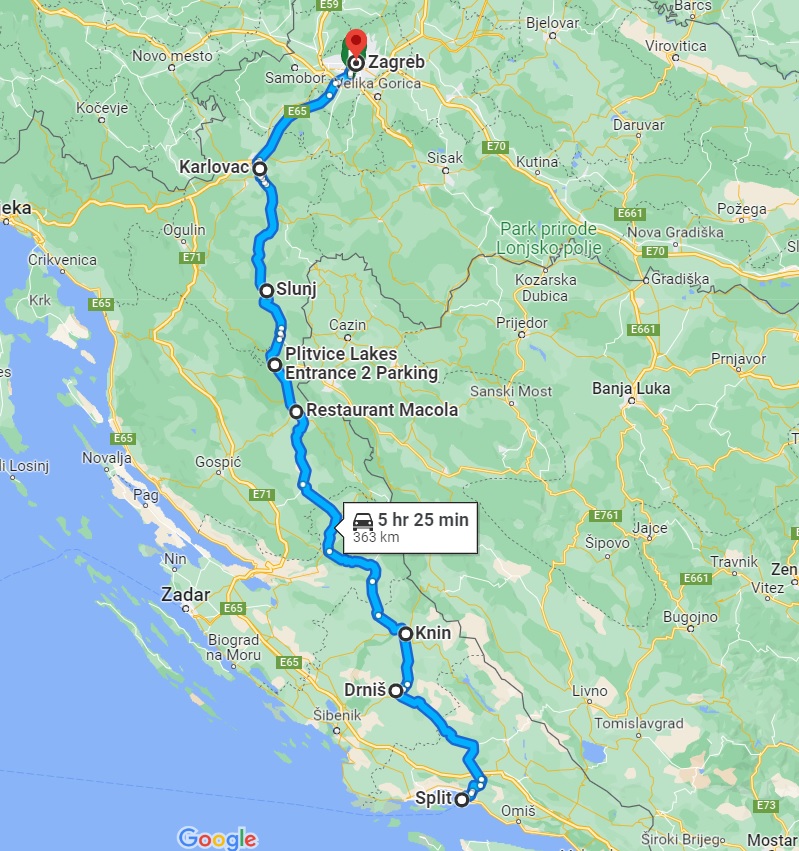
The beginning of the route is quite similar if your plan is to get to Dugopolje to take the E65 highway, only this time you will have to take the highway junction at Klis-Grlo, and you will now be on the D56 road in the direction of Drniš. Unlike the fast highways to Zagreb, this route can take between 5 and 5 hours and thirty minutes by car, almost an hour more. It's worth it? If you really have to get to Zagreb, or to Split, as soon as possible, there is not much I can tell you. But if you have time to spare, there are plenty of things you should consider that will surely encourage you to try something new. I mean, yes. There's nothing like the feeling of speed, but don't you sometimes get bored with your foot on the accelerator at a constant speed watching cars and trucks go by? I'm not saying the views aren't spectacular, because they are. What I'm trying to say is that there comes a point where you're no longer excited or surprised. Sometimes daring helps you discover new places and landscapes.
Here are some of the places you will see along the way:
Drniš
After crossing the picturesque valley behind Klis and crossing into the Sibenik-Knin region, you will find yourself in the village of Drniš, located halfway between the city of Šibenik and Knin. The valleys that anticipate and surround it will make you stop several times to carefully appreciate its beauty. There are many reasons why you should discover Drniš. Because it is a town with a rich tradition of culture and food, not least Croatia's most-distinct prosciutto (Drniš pršut). Additionally, it is the birthplace of Croatia's most famous sculptor, the world-renowned Ivan Meštrović.
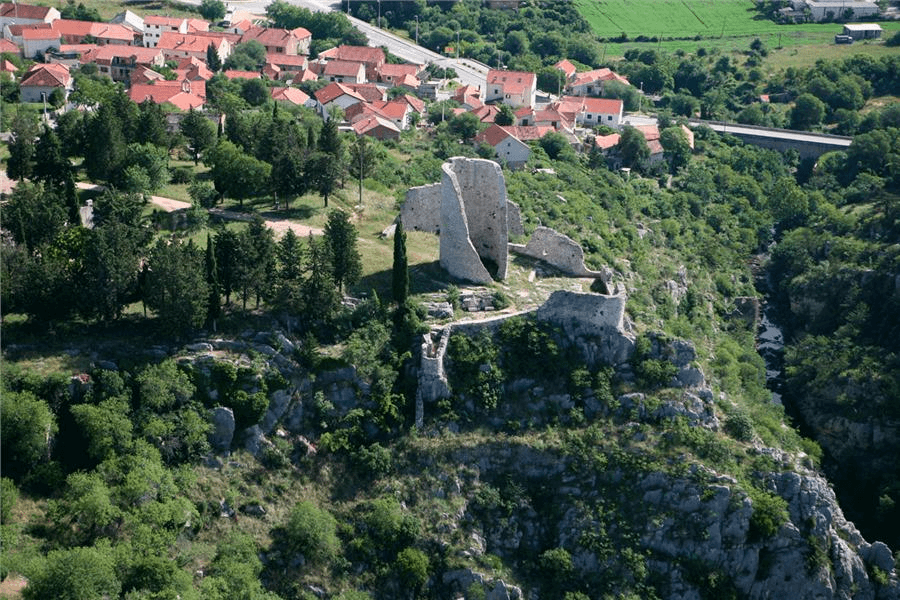
Image: Drniš Tourist Board
Knin
In Drniš, you will change the D56 road to the D33 in the direction of the historic town of Knin, which is almost half an hour away by car. If you start to feel like it's time to grab a coffee, grab a bite to eat, or even go to the bathroom, this is a good time. Personally, I would tell you to hold on a little longer because the next place to visit may be worth the wait. You can also walk through the streets of Knin, full of history that goes back hundreds of years and is mixed with a very recent one.
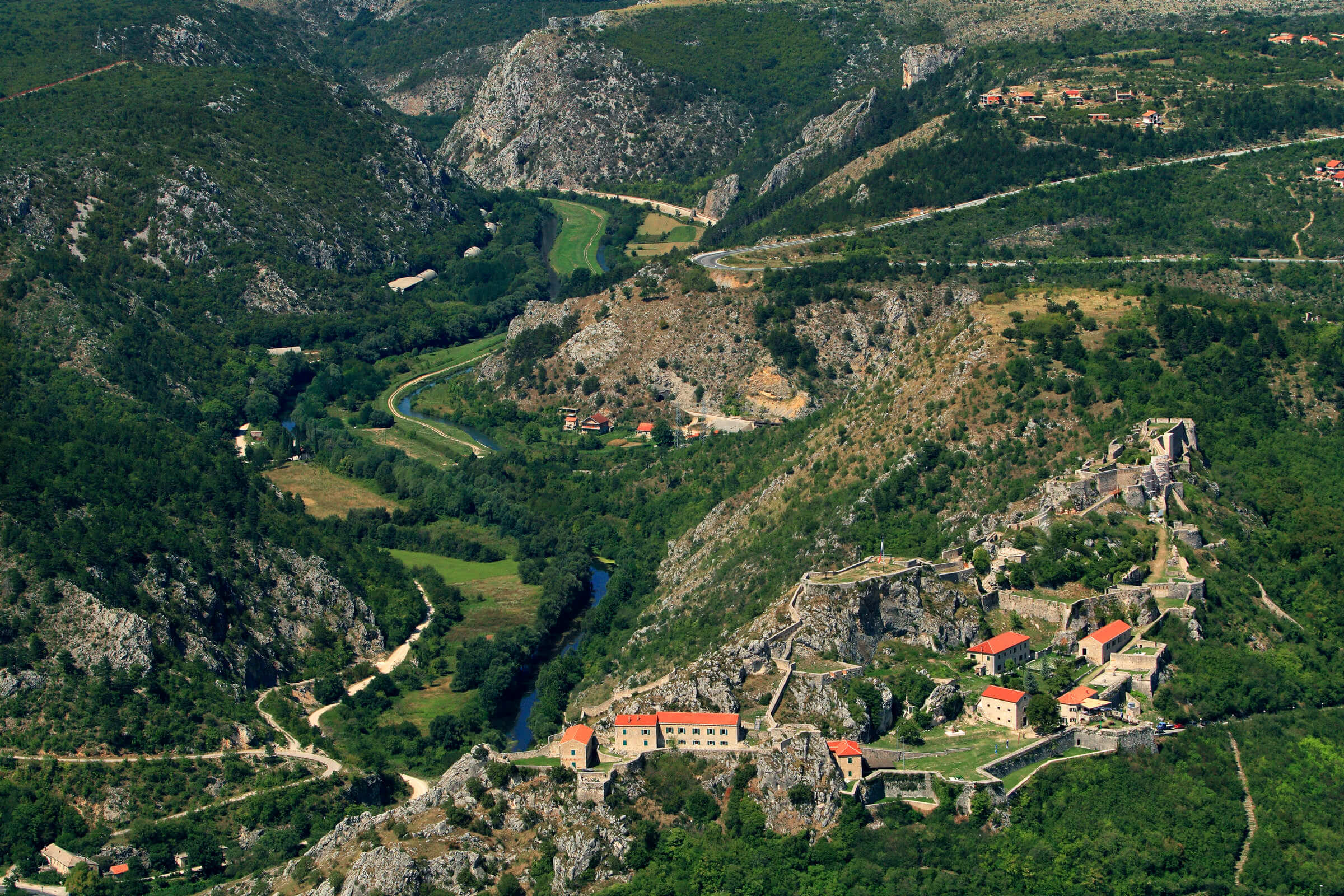
Photo: Mario Romulić
Macola Restaurant
Have you stopped at the Macola restaurant on the E65 highway? If the name doesn't ring a bell, you'll remember it for its stuffed bears and boars inside. It is very likely that you have stopped there on the way to have a coffee or something to eat. Although it is not exactly a destination, you might like to know that the original Macola is located on the D1 road, an hour and a half from Knin, and already in the county of Lika-Senj. Before the E65 existed, this was one of the most popular rest and refreshment points among travelers. My suggestion? A coffee and a walnut or apple strudel are a must.
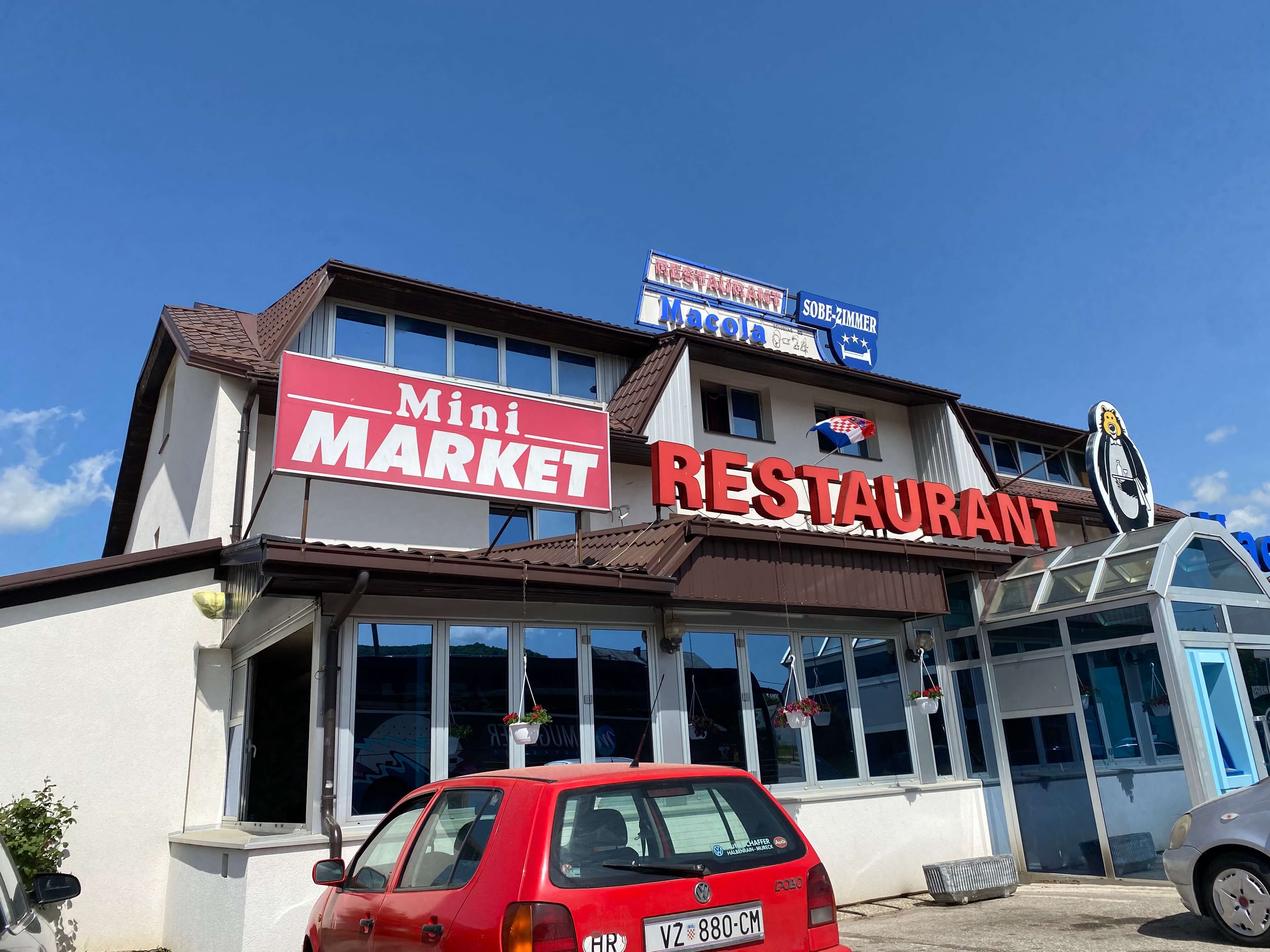
Photo: Jose Alfonso Cussianovich
Plitvice
I know that while you are not in a rush, you also do not have enough time to explore Plitvice Lakes National Park, the largest and oldest national park in Croatia. Perhaps you may find it interesting that two of the entrances to the national park are on the D1 road. You will definitely have to visit the Plitvice Lakes at some point, but for now, you will be able to enjoy the beautiful greenery that accompanies this part of the road, something that you will not be able to see on the E71 highway. If you are interested in visiting the Plitvice Lakes National Park, have you taken a look at the contest that we have organized in collaboration with the Park? You can win two tickets to visit it!
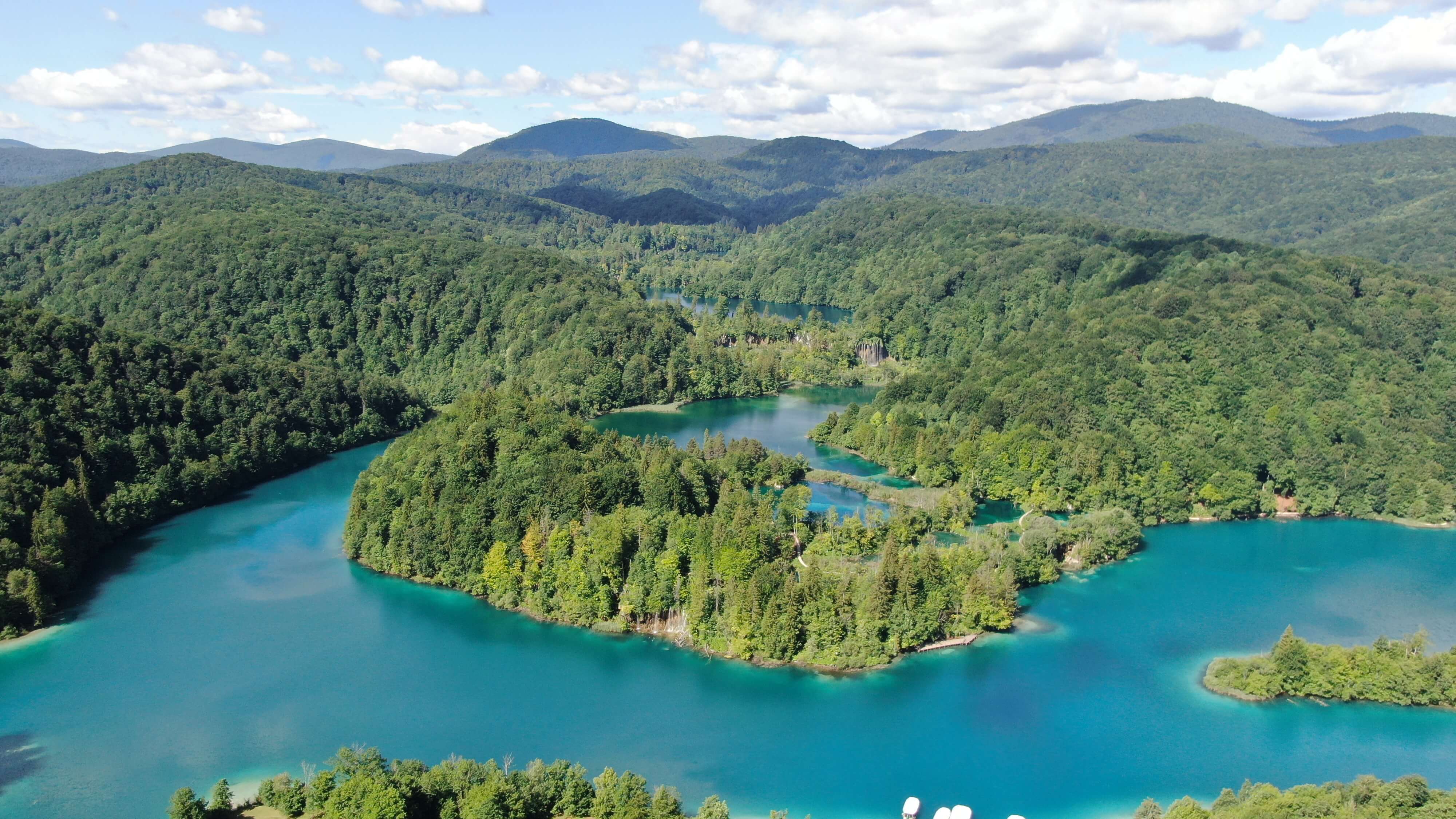
Image: Plitvice Lakes National Park
Slunj
It is difficult to get to Zagreb or Split via the same old motorway, as at some point you will have to return to the fast one either in Karlovac or in Dugopolje. However, that doesn't mean that was all you could see. Be it the first or last of your stops, you have to check out the magical, fairytale town of Slunj. If you have the time, visit it! And if not, from the same road you will be able to see it in the distance and feel that you are going through a location described by J.R.R. Tolkien!
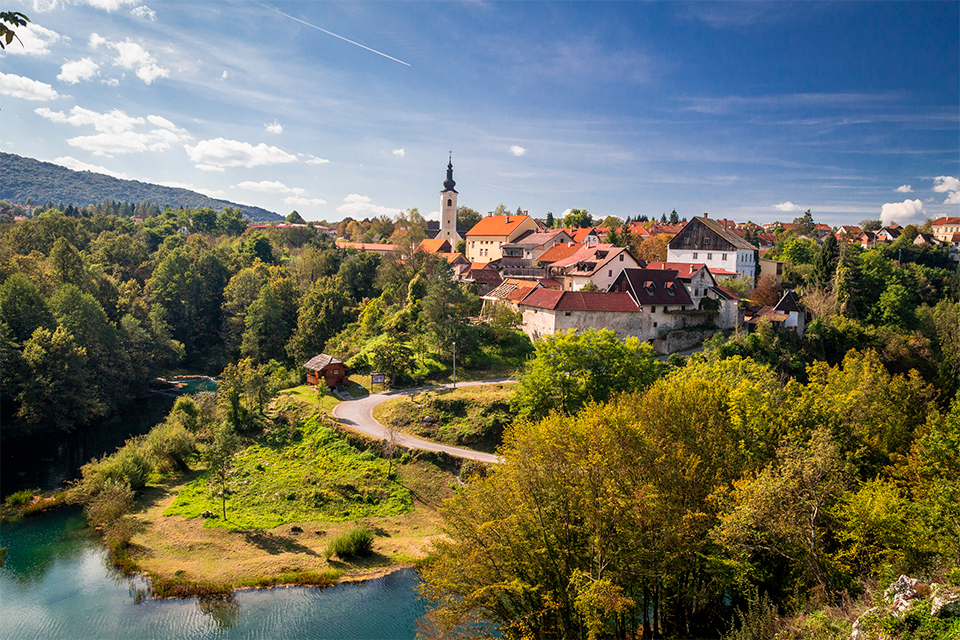
Image: Slunj Tourist Board
For more on travel in Croatia, follow TCN's dedicated page.
Krka National Park is 37! You're All Invited to Breathtaking Birthday Party
January 21, 2022 – Celebrating its birthday this week, Krka National Park is 37 years old. To mark the occasion, the park is inviting everyone to visit this weekend for free.
Just 20 minutes drive from the seaside town of Šibenik, Krka National Park is one of Croatia's most famous, most popular and most spectacular National Parks. Within 109 square kilometres of the Krka river valley, you'll find seven spectacular waterfalls, wonderful wildlife, epic karst rock canyons and thrilling views. It is a recreational playground of limitless enjoyment.
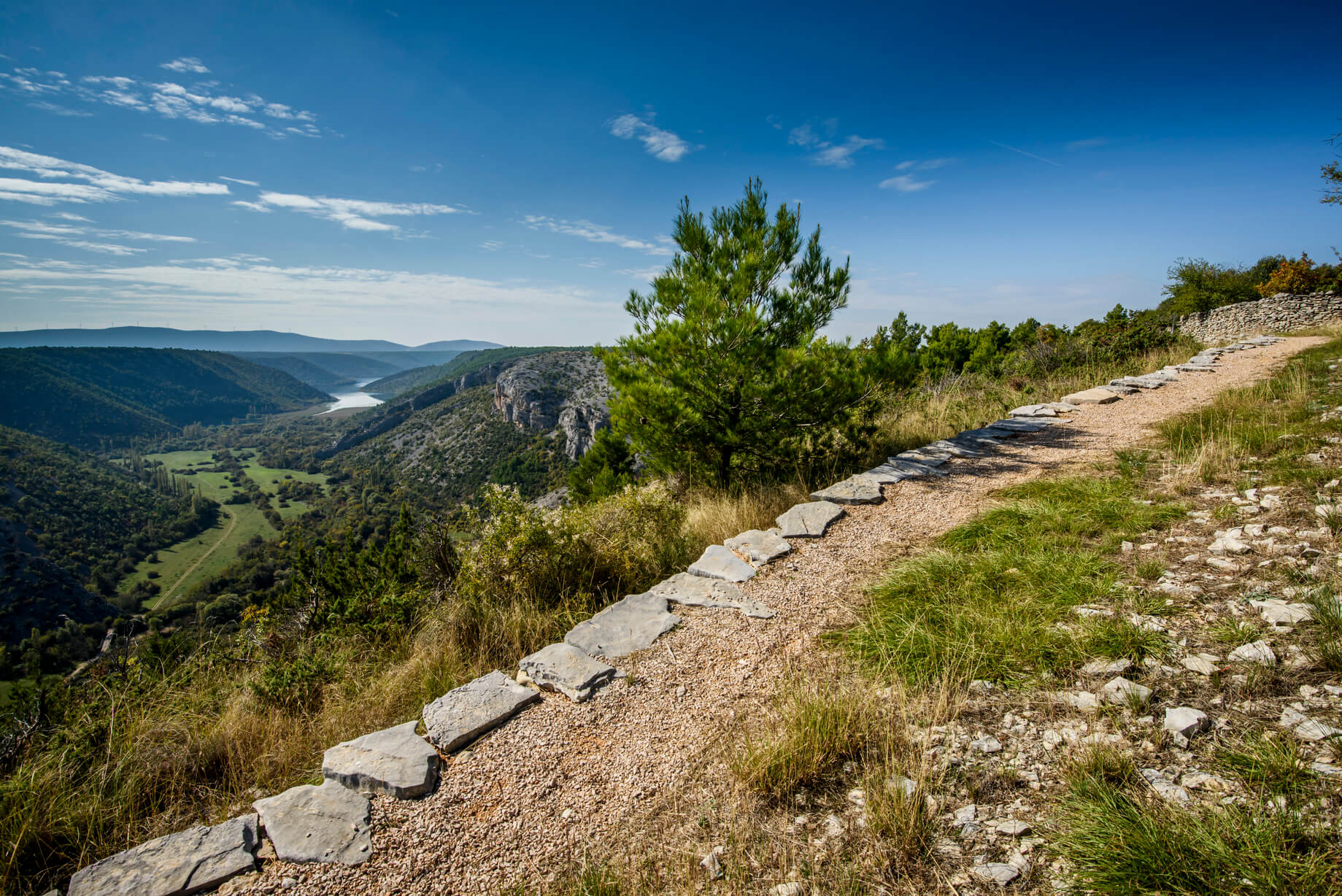 © Krka National Park
© Krka National Park
Over one million visitors come each year to Krka National Park. On the birthday weekend that Krka National Park is 37, park authorities are opening the entrances to everyone for free. It's the perfect opportunity to come and explore. From hiking trails and cycle paths to bird watching and landscape or nature photography, there's lots to see and do.
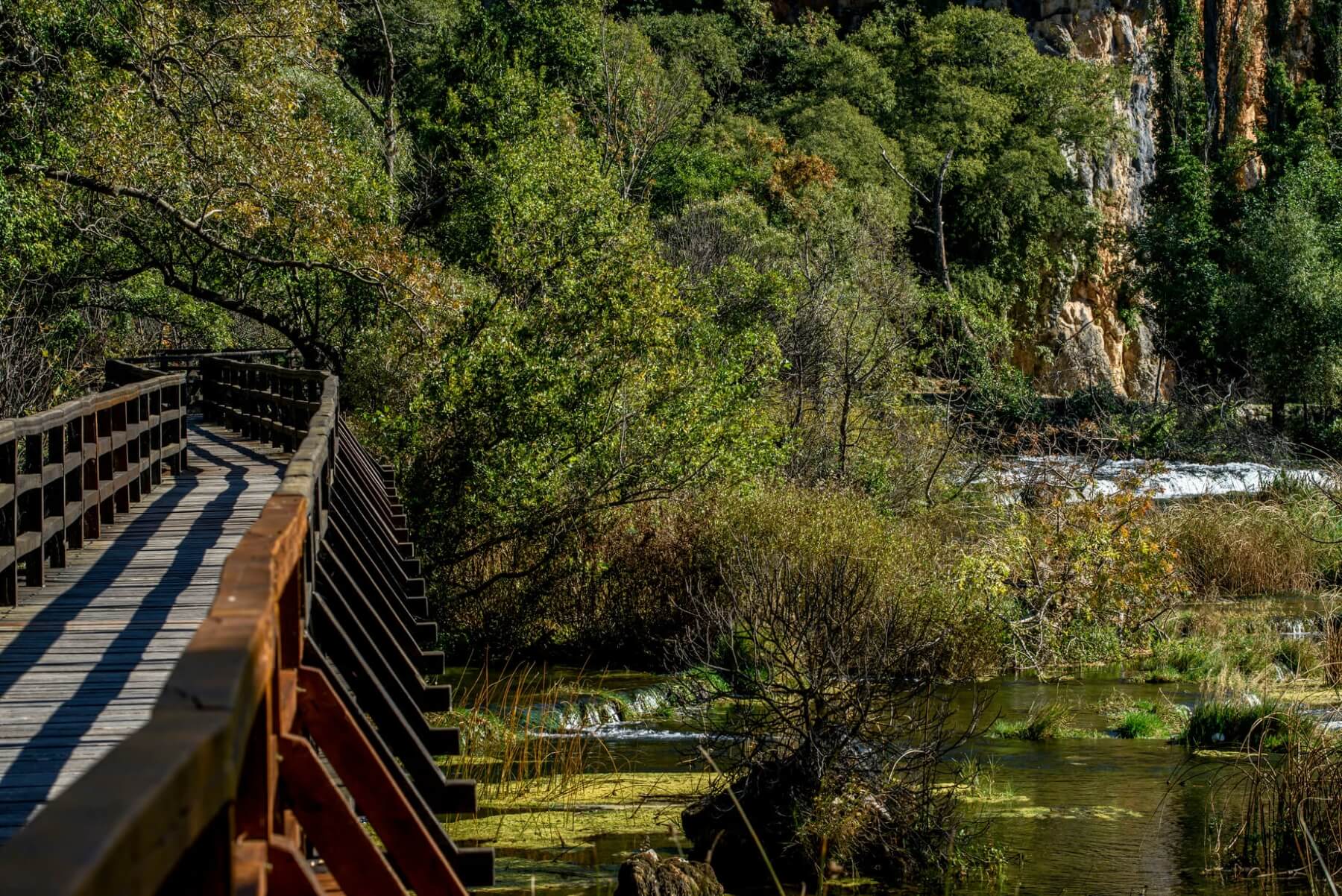 Roški Slap waterfall near Drniš © Krka National Park
Roški Slap waterfall near Drniš © Krka National Park
You may have seen Skradinski Buk and the pools near the southern section of the park and Šibenik. But, have you found Roški Slap waterfall further up, just a few kilometres west of Drniš? Or did you see the northern entrance of the park and its series of waterfalls near Knin? There's more in Krka National Park than you could discover in just one weekend.
'People from the Krka' photography for Krka National Park is 37
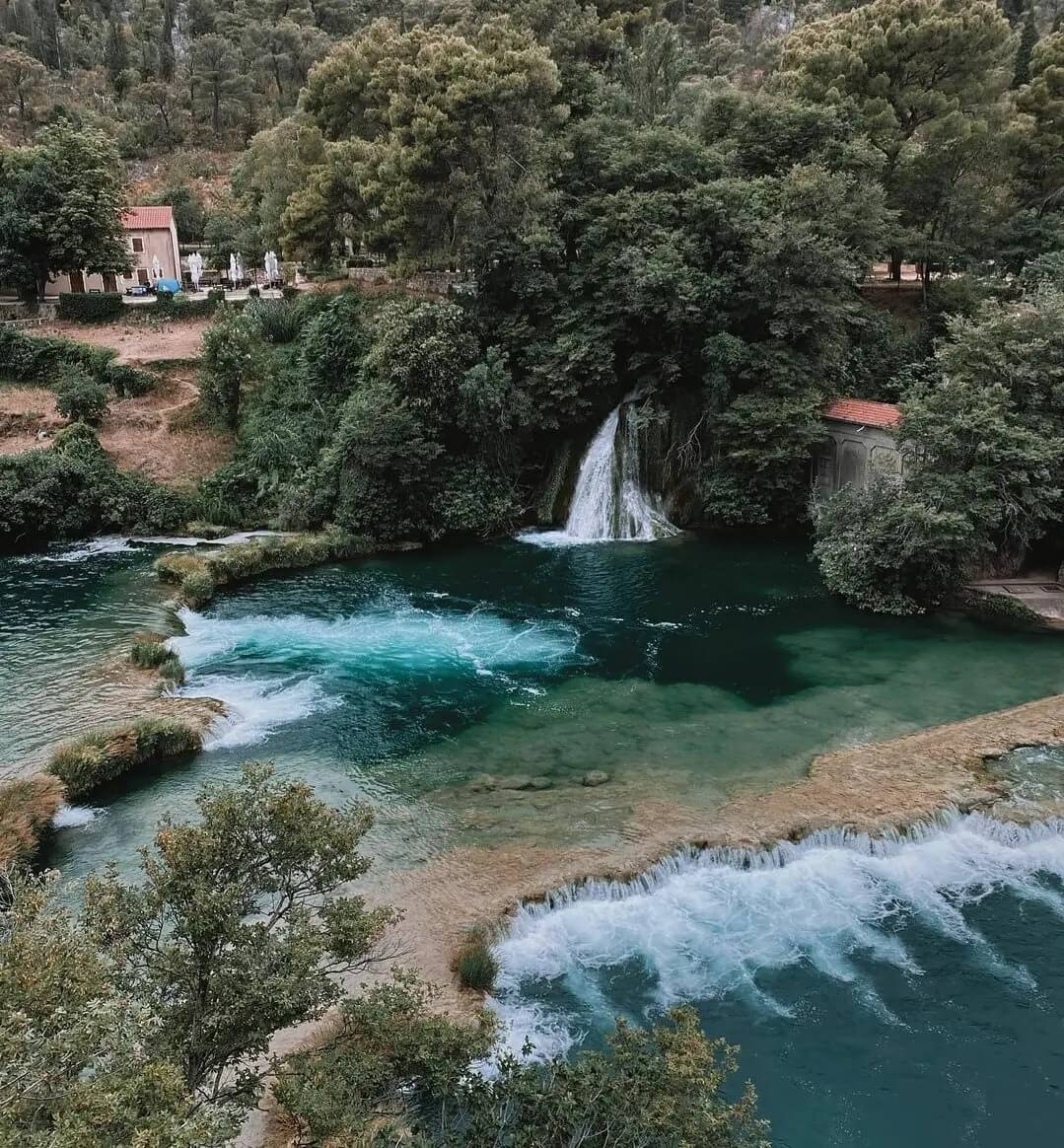
An extra attraction added in time for the birthday weekend is a public display of a specially curated photo series.
The landscape of what is today Krka National Park has been marked for millennia by the hands of man. People have existed alongside the Krka river since prehistory. Within the park, you can see evidence of how people have lived here across the ages.
People from the Krka is an exhibition of photographs that show folks whose lives and work happen within the river Krka canyon. The photographs are taken in the period from the founding of Krka National Park until today. The exhibition has been authored by renowned photographer Damil Kalogjera, who is particularly noted for his portrait work. It is the first in a series of NP Krka exhibitions that will present the people who live along the Krka.
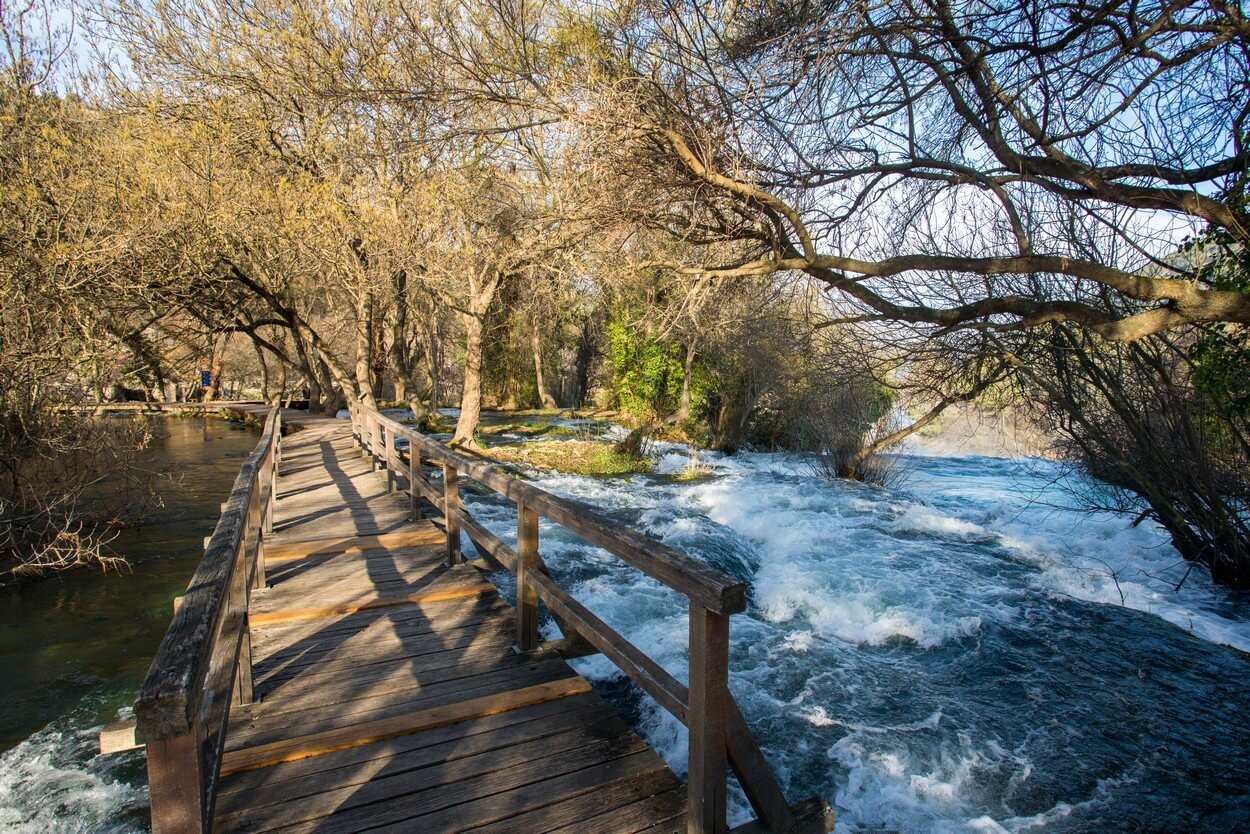 © Krka National Park
© Krka National Park
The opening of the photo exhibition will take place at 12 midday on Saturday 22 January at the Imperial Plateau on the lookout point above Skradinski Buk. It offers an unforgettable view of Krka's largest and most famous waterfall. Performing at the opening ceremony will be Skradin acapella group Klapa Skradinski Buk.
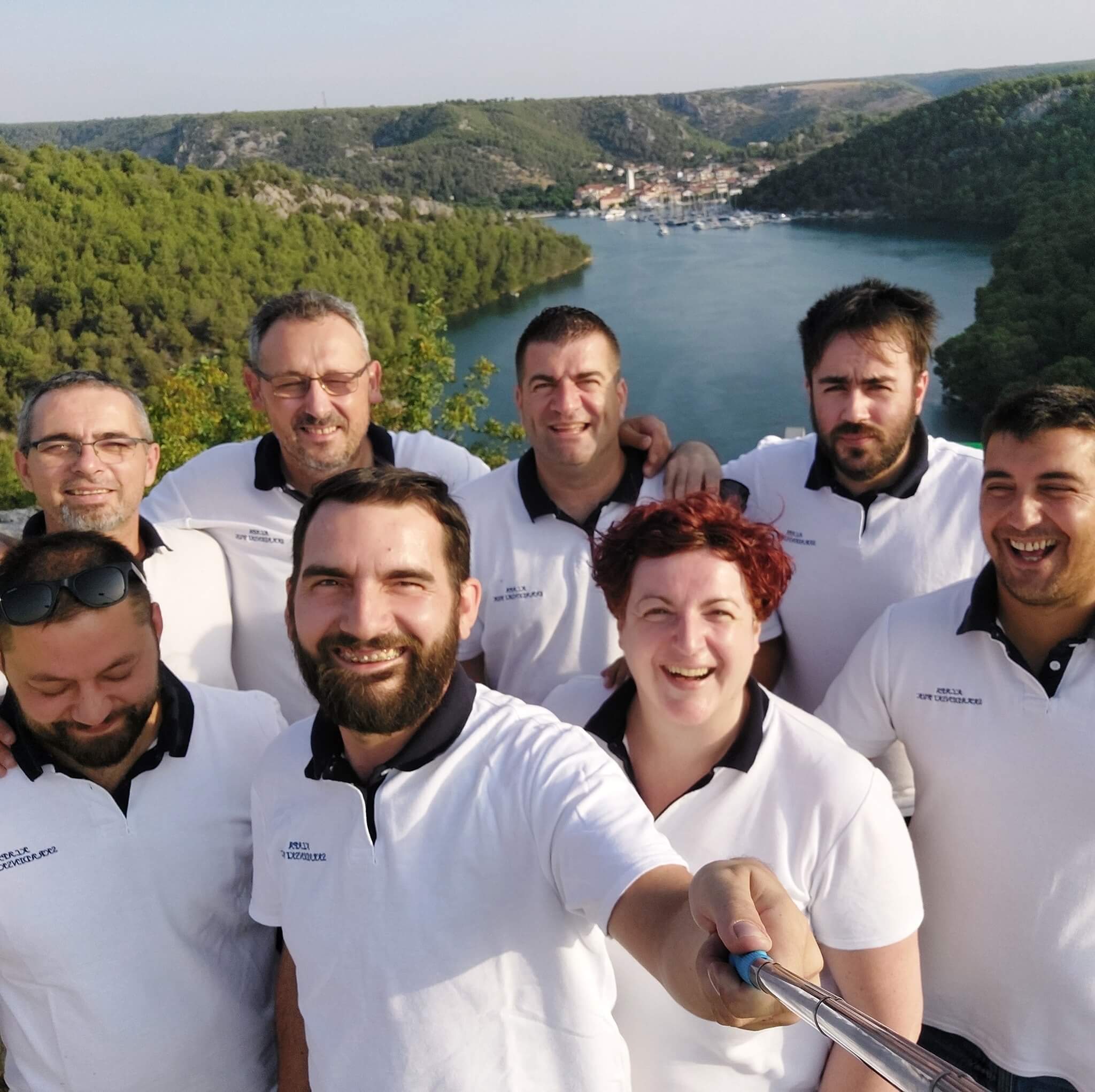 Klapa Skradinski buk
Klapa Skradinski buk
On the weekend that Krka National Park is 37, admission to the park is free on Saturday and Sunday. The park is open from 9am to 4pm. Entry into enclosed spaces is only possible with an EU digital COVID certificate.
Why not take advantage of the offer and visit Krka National Park for a full weekend? You can find brilliant accommodation in nearby Šibenik (here), Knin (here) or Drniš (here).
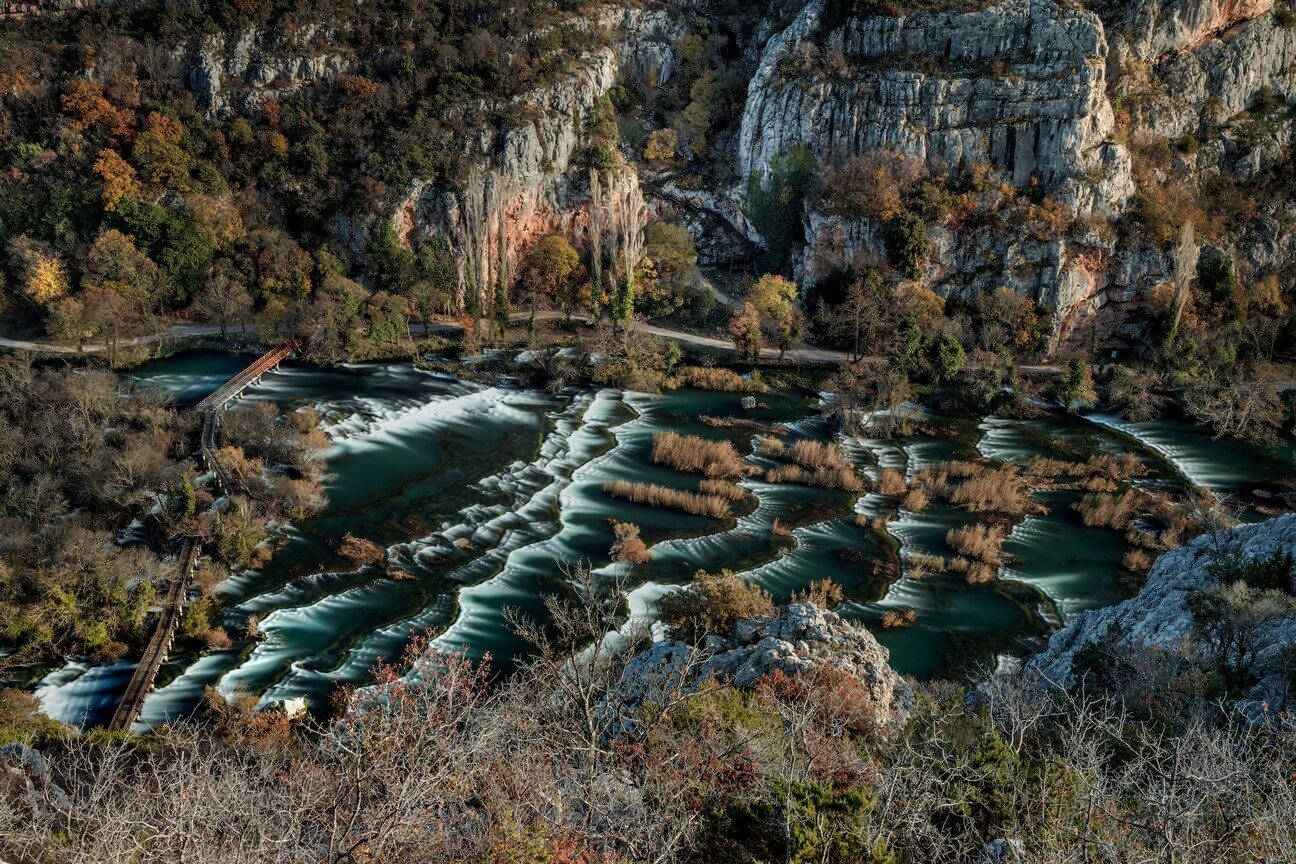 Roški Slap waterfall near Drniš © Krka National Park
Roški Slap waterfall near Drniš © Krka National Park
For more information about Krka National Park, look here.
Six of the Best! Croatian Protected Produce On Sale in China
September 18, 2020 – Six items of Croatian protected produce are among the 100 European items to go on sale in China
Six items of Croatian protected produce are among the 100 European items to go on sale in China. In a reciprocal deal, 100 Chinese products will also be recognised and recommended on the European market.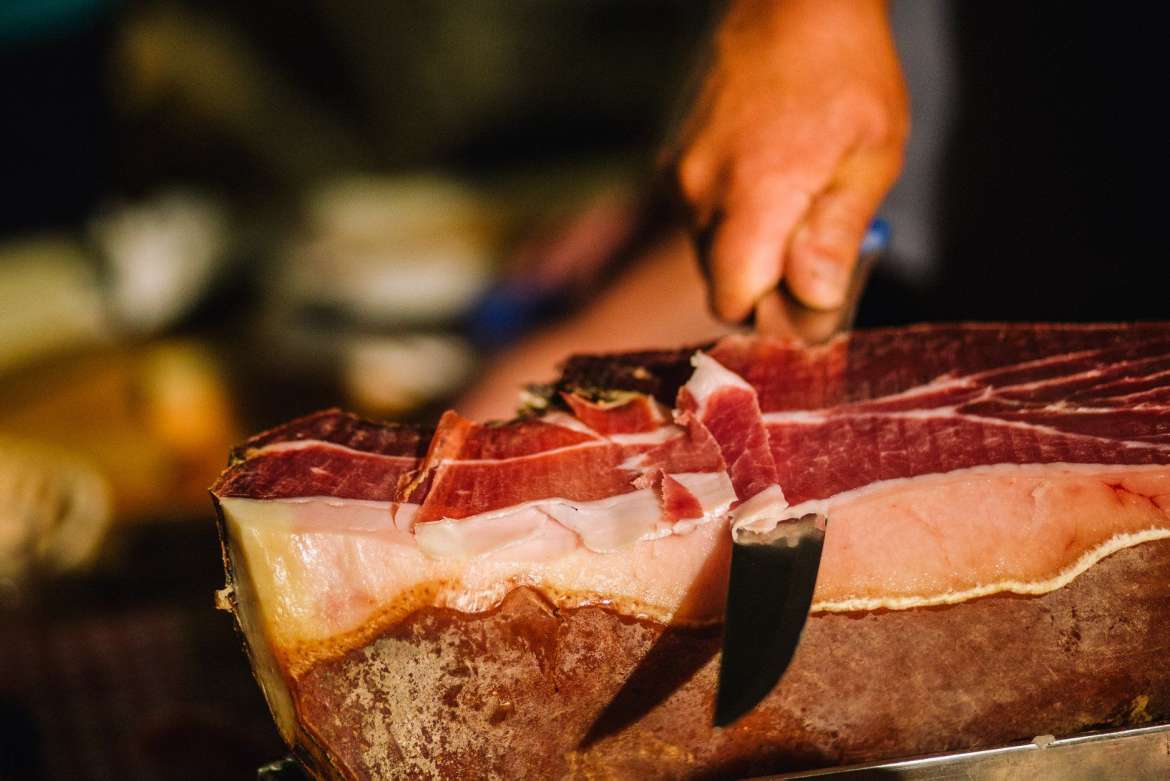 Dalmatian prosciutto © TZ Vrgorac
Dalmatian prosciutto © TZ Vrgorac
Baranja kulen, Dalmatian prosciutto, Drniš prosciutto, Lika potatoes, Dingač wine and Neretva mandarins are the premium six Croatian protected produce chosen to be among the European 100. All of the Croatian protected produce is already recognised at a national and at an EU-level and designated its status based on its unique place of origin. Dingač wine © Silverije
Dingač wine © Silverije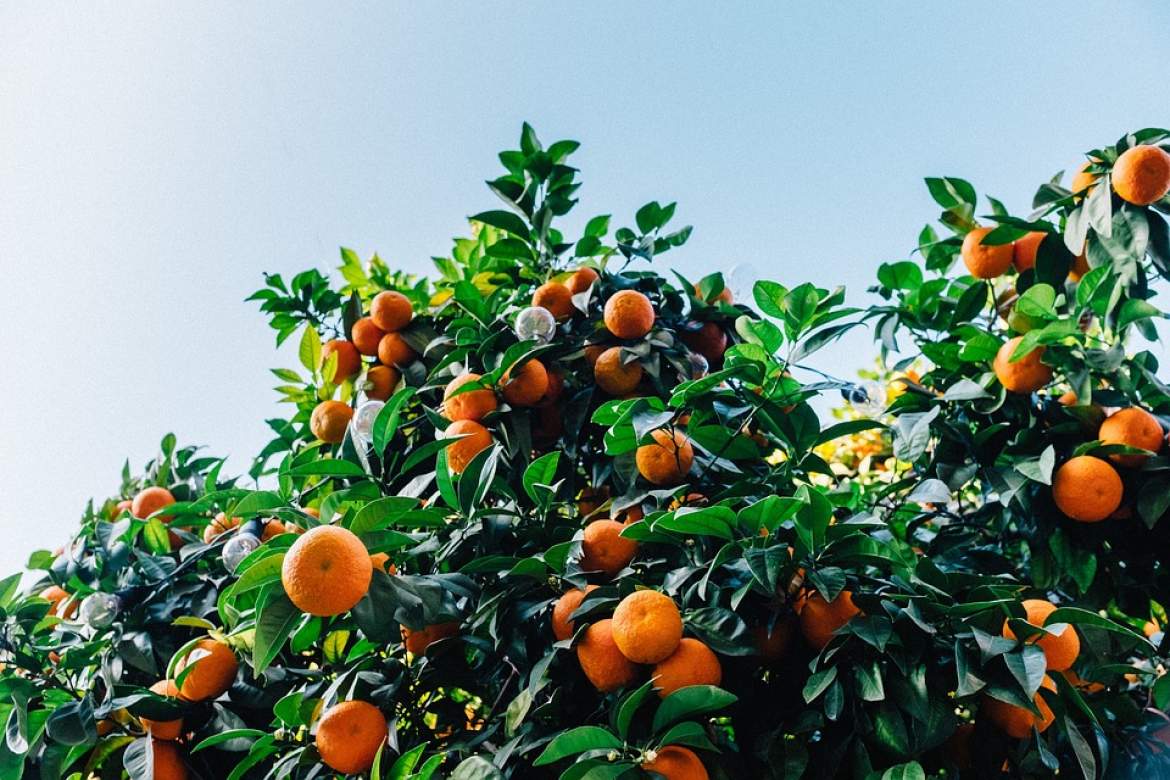 Neretva Mandarins
Neretva Mandarins
The European products will be specially marked and receive special privileges when they go on sale in China. Alongside the Croatian protected produce, other items on the European list are French champagne, Greek feta cheese, Italian Parma prosciutto, Italian mozzarella, Irish whiskey and Portuguese port. On the Chinese list of products are distinct varieties of rice, bean and vegetable products, some of which will already be popular with Europeans who eat or cook Chinese cuisine.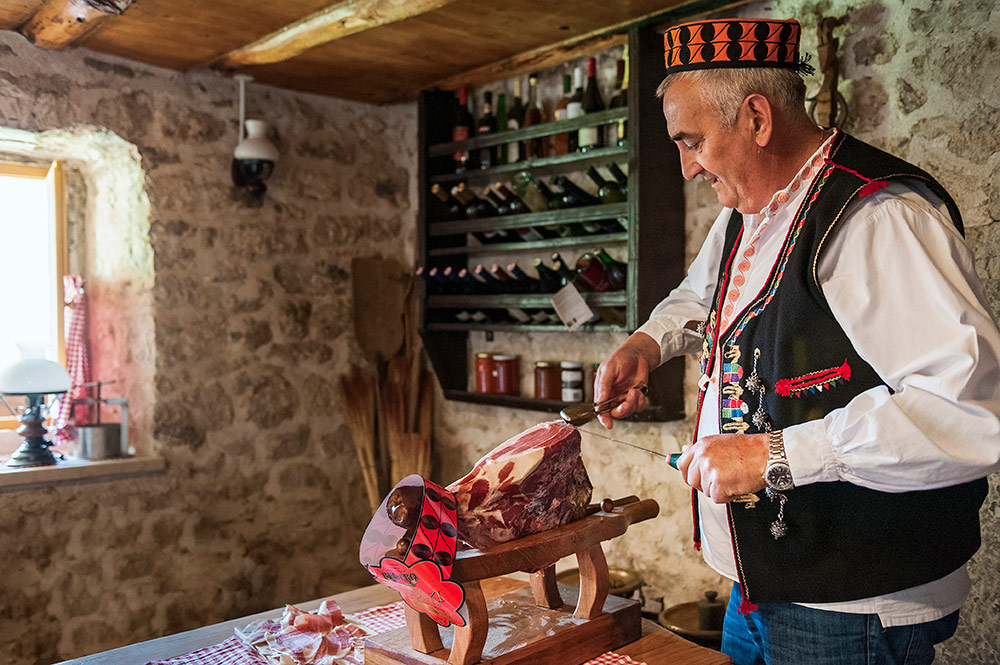 Drniš prosciutto © Tourist Board of Drniš
Drniš prosciutto © Tourist Board of Drniš
The full list of Croatian produce protected at an EU-level currently includes Istrian olive oil, Dalmatian prosciutto, Pag cheese, Lika lamb, Poljički Soparnik, Zagorje turkey, Korčula olive oil, Istrian prosciutto, Sour cabbage from Ogulin, Neretva mandarins, Slavonian honey, Drniš prosciutto, Cres olive oil, Pag salt, Baranja kulen, Bjelovarski kvargl, Varaždin cabbage, Pag lamb, Šolta olive oil, Meso 'z tiblice, Zagorje mlinci, Krk prosciutto, Lika potatoes, Slavonian kulen, Krk olive oil.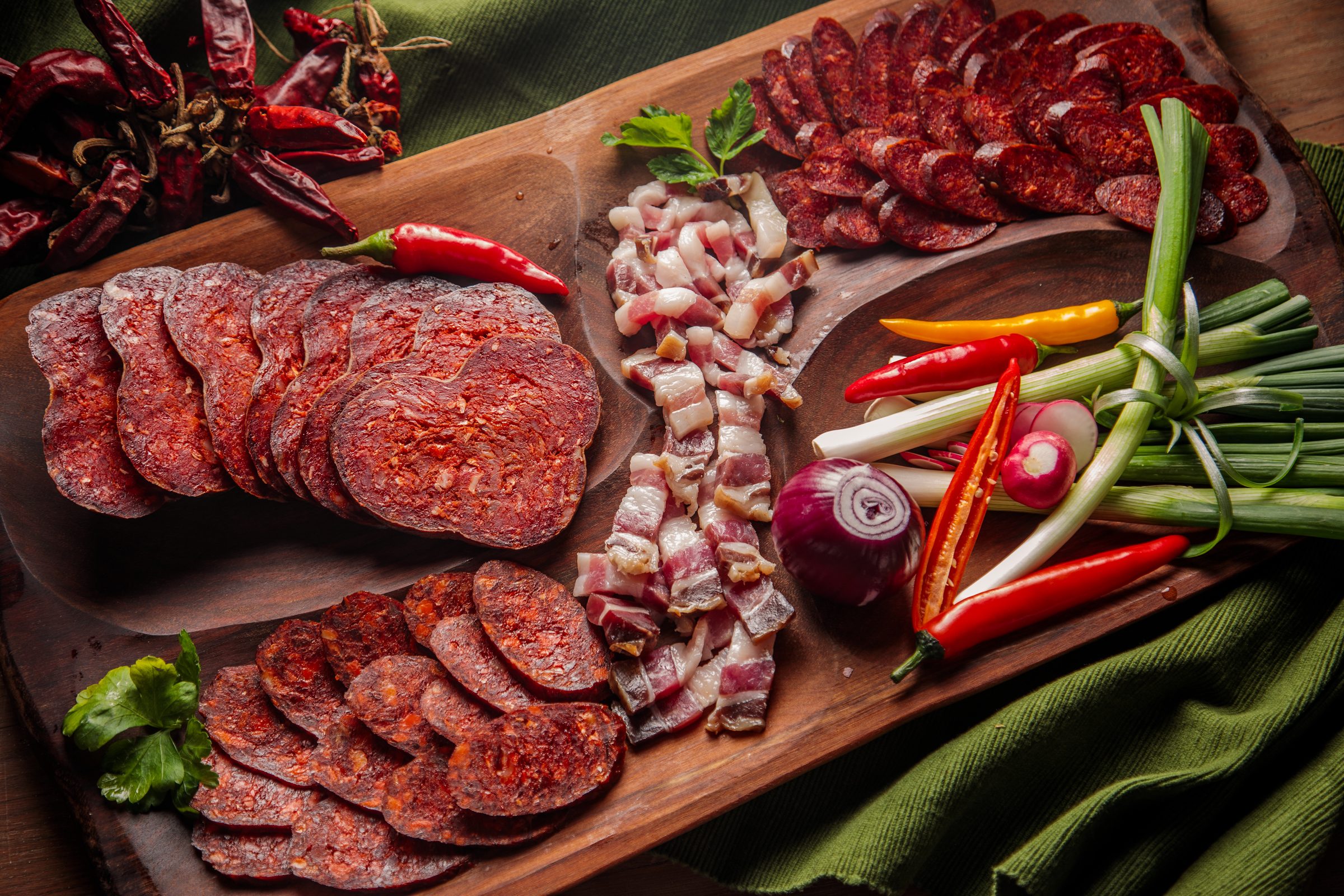 Baranja kulen, featured within a traditional Slavonian platter © Romulić & Stojčić
Baranja kulen, featured within a traditional Slavonian platter © Romulić & Stojčić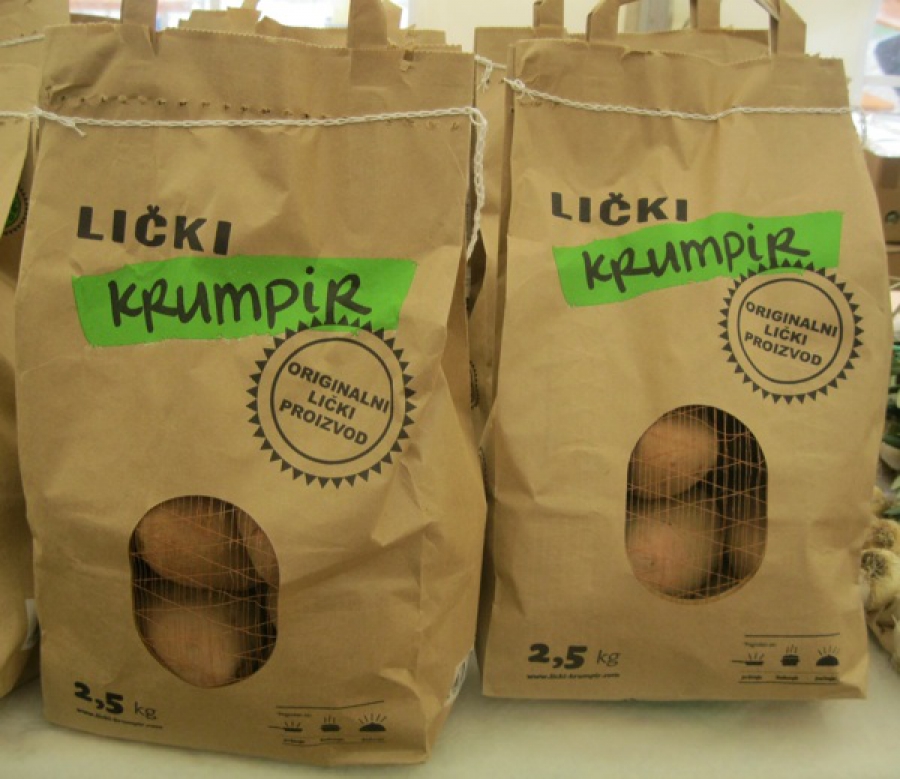 Lika Potatoes
Lika Potatoes
For the latest travel info, bookmark our main travel info article, which is updated daily.
Read the Croatian Travel Update in your language - now available in 24 languages
Prosciutto from Dugopolje Named Champion at International Festival in Drniš
August 26, 2019 - Dugopolje prosciutto producer Smjeli was named the best at the 6th International Prosciutto Festival in Drniš.
At the 6th International Prosciutto Festival in Drniš, which was held from August 23 and 24, the championship title was taken by Smjeli prosciutto from Dugopolje, the Croatian Chamber of Economy (HGK) announced on Saturday, pointing out that HRK 150 million has been invested in the production of prosciutto in five years.
The two-day International Prosciutto Festival brought together gastronomy enthusiasts in Inland Dalmatia and exhibitors from Croatia and the region.
"Although the current production of prosciutto does not even meet 50 percent of the needs of the domestic market, it is encouraged by the fact that over the past five years more than HRK 150 million has been invested in new prosciutto production plants," said HGK Vice President of Agriculture and Tourism Dragan Kovačević at the opening ceremony of the event on Friday in Drniš, reports N1.
Kovačević points out that prosciutto is the key to the Croatian tourism we strive for, and is an added value for guests with higher purchasing power. Namely, guests in Croatia are looking for an authentic experience and learning about lifestyles and traditions through the wine and gastronomy offer, and products with the protection of geographical origin can achieve twice the price on the market.
At the EU level, Croatia has as many as 21 traditional indigenous products protected by geographical indication or designation of origin, including four different Croatian prosciutto types from Istria, Krk, Drniš, and Dalmatia.
“We believe that the prosciutto producers, especially the large ones, will better organize raw material production through the cooperative system, and that in the future we will meet the needs of our industry from our own pig breeding. Good raw materials, with standard production technology, is a key prerequisite for superior quality prosciutto,” Kovačević said.
The organizers of the 6th International Prosciutto Festival are the Tourist Board of Drniš with the City of Drniš, and the Association of Drniš Prosciutto Producers.
The festival aims to encourage the production and promotion of indigenous and traditional products, handicrafts based on tradition and originality, other cultural and traditional content, and the development and promotion of the overall tourist offer of the town of Drniš with an emphasis on gastronomy. Namely, besides prosciutto, which was awarded over the weekend, producers of cheese, wine, honey, and other local products were presented at the Drniš festival.
The prosciutto festival is also an opportunity to get to know the natural and artistic beauty of the Drniš area, the Krka National Park, the Čikola Canyon, and the works of Ivan Meštrović, in addition to gastronomy.
To read more about lifestyle in Croatia, follow TCN’s dedicated page.
20 Million Euro Invested in Prosciutto Production in Croatia
ZAGREB, August 24, 2019 - An official of the Croatian Chamber of Commerce (HGK), Dragan Kovačević, has said during the ceremony of opening a prosciutto festival in Drniš that over the past five years 150 million kuna has been invested in new plants for prosciutto production in Croatia.
"Although the current prosciutto production meets less than 50% of the demand in Croatia, the encouraging fact is that in the last five years, 150 million kuna has been invested in new plants for prosciutto production," Kovačević says adding that prosciutto can be an additional value for the tourist trade.
The two-day international festival in the town in the Dalmatian hinterland was opened on Friday, and apart from the promotion of prosciutto, also homemade cheese, wines, honey and other local food were put on display during the event.
Five years ago, 250,000 prosciutto hams were produced in Croatia, and currently the annual production is 400,000. The portion of domestic raw material in those final products has risen from 10% to 50% over the past 10 years. Consumption of prosciutto has increased by 50% over the past five years.
So far, Drniš, Istrian, Krk and Dalmatian prosciuttos have been included in the EU register of protected designations of origin and protected geographical indications. Thea are among the 21 Croatian traditional products protected by this EU register.
More news about the food production in Croatia can be found in the Lifestyle section.
Potential for Croatian Producers as Prosciutto Exports Continue to Grow
As Morski writes on the 3rd of April, 2019, what has been happening with prosciutto for the past three to four years is truly spectacular. Due to its superior properties and specific traditional production technology, Croatian prosciutto producers have stumbled upon some great export potential and even more potential for the product's better placement in Croatian tourism through the country's already rich gastronomic offer.
When compared to five years ago in 2014, exports have increased in quantity by fourteen times, and perhaps most importantly, in value eleven times. Approximately 88 percent of total exports go to the EU market, and just over eleven percent go to CEFTA countries.
''The latest 2018 statistics show an increase in exports of shank and aitchbone products by nearly sixty percent, but unfortunately, we still don't even cover a third of imports. We need new investments and we need to invest in new prosciutto production capacities to double our production, and 700,000 pieces annually to at least meet the needs of the domestic market,'' said Dragan Kovačević, vice president of the Croatian Chamber of Economy for Agriculture and Tourism, at a press conference announcing the event Days of Croatian Prosciutto.
Ante Madir, Executive Director of the "Hrvatsko pršuta" (Croatian prosciutto) cluster, which brings together producers responsible for 95 percent of the total prosciutto production in the Republic of Croatia, explained more precisely what awaits Croatia on the fifth Days of Croatian prosciutto, which is being held from the 26th to the 27th of April at the Zagreb International Hotel this year.
''On the first day, we'll have a manifestation with round tables and workshops, the expert part of the gathering, and the second day at Ban Jelačić Square, there'll be a show-selling part where people can taste our prosciutto,'' Madir said, adding that they decided on Zagreb because quite a large market and a high demand for the product can be found in the Croatian capital.
"What's been happening with prosciutto over the past three to four years is truly spectacular. The signs of protection (special labels) are our tickets to the wider European Union market, that's very important for being able to [have our products] arrive to shop shelves. In Croatia, we still need to work on presenting [our products] to consumers to have them pay more money for something which is domestic and specific,'' said Igor Miljak, chairman of the PPK Karlovac meat industry, stressing that Croatia still doesn't have key gastro brands that are recognised on the European or global market, but it definitely does have the quality to be able to cope well with the competition.
Ana Babić from Voštane pršut, a representative of the Association of Dalmatian Prosciutto, explained the difference between Dalmatian and Istrian, or more specifically Krk prosciutto.
''Dalmatian prosciutto is smoked, while Istrian and Krk prosciutto isn't. There are no additives or preservatives in its production, and the process itself lasts for at least a year,'' Babić explained, adding that the tradition of Dalmatian prosciutto production draws its roots from as far back as ancient Roman times.
Drago Pletikosa of Belcrotrade and the president of the Association of Drniš pršut stressed that Drniš prosciutto is a little and is therefore certified, although there is no difference between Drniš and Dalmatian prosciutto when it comes to the production process itself.
''Last year, we imported 3,848 tons of products worth more than 21.5 million euros and exported 1.113 tons (6.5 million euros). Compared to 2014, exports have increased in quantity fourteen times, and by value eleven times. Approximately 88 percent of our total exports go to the EU market, and just over eleven percent go to CEFTA countries. We export the most to Slovenia (35.5 percent of total exports) and to Italy (28.1 percent),'' stated Pletikosa.
''This event brings together and promotes prosciutto producers from all over the country, whose products are protected by a stamp of designation of origin, and labels of geographical origin (Krk, Dalmatian and Drniš prosciutto) at the EU level,'' stated the Croatian Chamber of Commerce (HGK).
Quality labels for consumers guarantee the purchase of authentic and properly controlled products, with recognised quality and a local origin. Protecting products without educating consumers and business partners about its proper valuation has no great benefit. Therefore, this event contributes to the strengthening of the recognisability of these Croatian meat products with higher added value and a better market positioning, all with the aim of developing the wider Croatian economy.
Make sure to follow our dedicated business and Made in Croatia pages for much more.
Drniš Nominated for "Best of Europe" Award for Sustainable Tourism
The city of Drniš has been nominated for the "Best of Europe" tourist award at the ITB Berlin, reports Dalmacija Danas on March 6, 2019.
The prestigious awards for sustainable destinations will be awarded at the world’s leading travel trade show on Wednesday, March 6, 2019. A jury evaluated 100 destinations in 12 organizations to identify the best success stories. In the end, 44 destinations were shortlisted, including Drniš, which were nominated in ten categories.
Drniš has been nominated in the “Best of Europe” subcategory "Best of Planets”, which is a category that awards the “greenest” destinations of each continent, or destinations that show innovation and responsibility in the sustainable development of tourism and protecting the environment in different parts of the world. The Lyngenfiord region, Norway, Portugal, and Bled, Slovenia are also nominated in this category.
This is a unique event dedicated exclusively to recognizing innovations and good practices in the tourism management of destinations - islands, cities, regions and entire countries. The award recognizes ”green destinations" as destinations that are desirable for travel and media, Radio Drniš reports.
Representatives of the City of Drniš are also in Berlin, headed by the deputy mayor Tomislav Dželalija and Ivan Sučić, head of the administrative department for the economy, finance and social affairs. Support for this event will be given to Drniš by the Ambassador of the Republic of Croatia in Berlin, Goran Grlić Radman.
“With this nomination, it has once again been confirmed that the whole of the region has a huge tourism and development potential, which, with the responsible and sustainable management of cultural and natural heritage, and other resources, becomes a recognized and desirable destination in Europe, but also in the world,” concluded the City of Drniš.
The delegation of the City of Drniš also met with the Minister of Tourism, Gari Cappelli and the State Secretary of Tourism Tonči Glavina at the HTZ booth at ITB Berlin. During the meeting, the Minister was introduced to the projects implemented by Drniš in order to improve the tourist offer and extend the tourist season.
To read more about travel in Croatia, follow TCN’s dedicated page.
Five Million Kuna for Drniš Hostel, Promina Road Renovations, Bike Tracks
Thanks to EU funds, Drniš gets a breath of new life and a potential slice of the tourism cake.
Prosciutto in Support of Health - The 4th Promina Trail in Drniš
Feeling hungry but don't want to pay the physical price? Head to Drniš.


